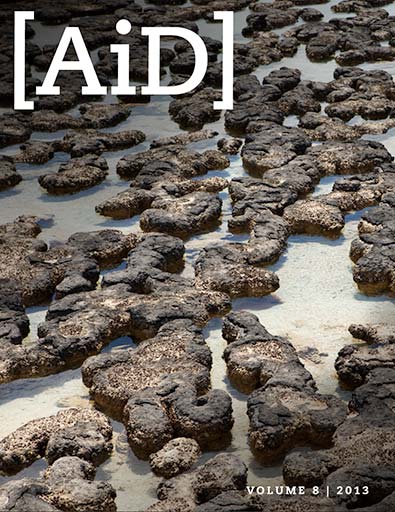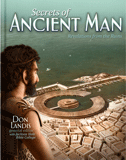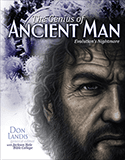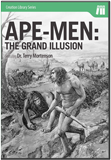
Lucy Makeover Shouts a Dangerously Deceptive Message About Our Supposed Ancestors
Abstract
Australopithecus afarensis newest reconstruction drags Lucy down-to-earth.
News Source
- Science: “ScienceShot: Lucy’s Svelte Look”
“Lucy”—the partial Australopithecus afarensis skeleton discovered in 1974 in Ethiopia’s Hadar Formation and long hailed as the evolutionary bipedal mother of humanity—just got a makeover. Her svelte new figure, recently unveiled at the Cleveland Museum of Natural History, has a trim waistline and arched feet. The purpose of the new reconstruction is to avoid giving the impression that humanity’s afarensis ancestors retained chimp-like adaptations for arboreal life.

Lucy’s had a makeover, courtesy of paleoanthropological artistry intended to avoid revealing the uncomfortable truth that actual Australopithecus afarensis fossils are consistent with an ape suited for arboreal maneuvering. Image by John Gurche/Cleveland Museum of Natural History, via Science.1
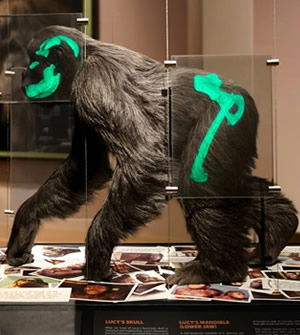
The Creation Museum model of Lucy shows how the original Australopithecus afarensis fossils support the knuckle-walking habits of this extinct ape. Additional bones clearly associated with afarensis specimens support this ape’s arboreal lifestyle by revealing features such as wrist bones that lock for knuckle-walking and shoulder blades oriented for swinging in the trees. Image by Answers in Genesis Creation Museum, Petersburg, Kentucky.
The Cleveland Museum’s paleoanthropologist Yohannes Haile-Selassie and artist John Gurche designed the reconstruction to reflect interpretations based on fossilized ribs and a foot bone thought by some to belong to Lucy’s afarensis cousins. Dr. Carol Ward presented her talk entitled “Australopithecus below the neck” at the coinciding public symposium, “On the Trail of Lucy: A Collaborative Exploration of Australopithecus.”2 She and others discussed the anatomical implications and evolutionary interpretations associated with these bones.
From “Adam’s” Rib?
The new Lucy has a human-like barrel-shaped chest and trimmer waistline instead of a chimp-like cone-shaped chest and potbelly. The case for this remarkable transformation is based on the curvature of some fossilized ribs belonging to “Kadanuumuu” (aka “Big Man”). This headless group of bones, dated at 3.6 million years, was found only about 48 kilometers from Lucy’s recovery site and analyzed by Haile-Selassie, curator of Physical Anthropology at the museum. The partial skeleton of “Big Man” appeared to belong to a “robust male between 1.5 and 1.7 meters tall, about 30% larger than Lucy.”3
Big Man’s shoulder blade is consistent with that of a modern human, and “the curvature of the second rib suggests a wide rib cage at the top and a barrel shape overall, similar to that of modern humans and distinct from the more funnel-shaped rib cage of a chimpanzee,” Haile-Selassie’s team reported in 2010.4
Not all anthropologists agree with Haile-Selassie’s conclusions. For instance, Stony Brook University paleoanthropologist William Jungers pointed out that the ribs were damaged and the human-like limb proportions were based on a single complete lower leg bone.5 Of course, the possibility that the headless “Big Man” was neither ape nor ancestral hominid but rather a human (like perhaps Homo erectus) never enters the minds of evolutionary paleoanthropologists. Why? Because the fossil was found in strata dated according to evolutionary presuppositions, millions of years before humans were supposedly on the scene.
In any case, the human-like chest shape, which would make an efficient arm-swinging bipedal stride possible, is now assigned to Lucy’s so-called “big brother.”6 Lucy’s actual ribs—those of the original Australopithecus afarensis, that is—according to evolutionary paleontologists, are consistent with a conical-shaped chest. Peter Schmid of the Anthropological Institute in Zurich, Switzerland, for instance, expressed surprise that Lucy’s thorax was so ape-like. Schmid said:
When I started to put the skeleton together, I expected it to look human. Everyone had talked about Lucy as being very modern, very human, so I was surprised by what I saw. I noticed that the ribs were more round in cross-section, more like what you see in apes. Human ribs are flatter in cross-section. But the shape of the rib cage itself was the biggest surprise of all. The human rib cage is barrel shaped, and I just couldn’t get Lucy’s ribs to fit this kind of shape. But I could get them to make a conical shaped rib cage, like what you see in apes.7
The dramatic differences between “Big Man” and “Lucy” are presumably written off to sexual dimorphism or their supposed 0.4 million year age discrepancy rather than to the fact that “Big Man” might not even be an afarensis or any kind of ape at all.
Despite the 2012 report of another afarensis fossil (named “Selam”) with a shoulder blade adapted for arboreal life, the more human-like “Big Man” offers more “scope for imagination”8 to the evolutionary story and to the Cleveland museum’s new fleshed-out, slim-and-trim Lucy. Of the “Big Man” fossil, Dr. Ward believes, ”This beautiful afarensis specimen confirms the unique skeletal shape of this species at a larger size than Lucy, in what appears to be a male.”9 Safely labeled as afarensis, therefore, “Big Man” provided the ribs that inspired the newer, more girlish figure for Lucy.
Putting Their Best Foot Forward
Inspiration for Cleveland Lucy’s prancing arches also comes from fossils not found with the original Lucy. The “Lucy” Donald Johanson found had no feet. Ward, with William Kimbel and Johanson, authored a study published in 2011 claiming that a fossilized fourth metatarsal (foot bone), designated AL-333-160 and presumably belonging to an Australopithecus afarensis, “proved” Lucy had an arched foot.

These photos compare AL 333-160, an isolated fossilized metatarsal from Ethiopia’s Hadar formation, with the corresponding foot bone in humans (H. sapiens), chimpanzees (P. troglodytes), and gorillas (G. gorilla). The bone’s curvature and the angles of its facets, corresponding to the bone’s likely relationship with other foot bones, suggest AL 333-160 is remarkably human, but evolutionists believe the bone was found in a place proving it was too old to belong to a human. Image by Carol B. Ward et al., via Science.10
Metatarsals are the long bones in the foot between the toes and the ankle. Beneath them, in a human, are transverse (cross-ways) and longitudinal (long-ways) arches. Working in concert with the legs and pelvis, human foot bones are shaped and bound together in such a way as to allow the human foot to transition between a rigid lever and a flexible shock absorber with every step. The arches of the human foot continue the work of absorbing shock and adjusting to uneven terrain even during the foot’s rigid phase. They therefore increase the efficiency of bipedal upright walking.
Modern ape feet, on the other hand, are fairly flat and remain flexible so as to allow them to mold and adjust to the tree branches they often have underfoot. Modern apes are able to walk upright on two legs for a time, but they are not designed for sustained, efficient upright walking and therefore have no need for an arched foot.
Ever since the discovery of the human-appearing arched Laetoli footprints in Tanzania, roughly 1000 miles away from Lucy’s Ethiopian resting place, evolutionary speculation has continually dragged Lucy from her home in the trees to a ground-based habitat. Evolutionary anthropologists are eager to show an evolutionary progression through supposed hominid ancestors and maintain that learning to walk upright facilitated whatever evolutionary processes were required to become human. Thus, Ward, writing in Science in 2011, wrote, “Determining the extent to which the foot of A. afarensis had permanent longitudinal and transverse pedal arches is key to deciphering the extent of its commitment to terrestrial bipedality.”11
Ward noted, however, that until the discovery of the fourth metatarsal she analyzed, “Skeletal evidence for the presence of bipedal arches in A. afarensis has been ambiguous.”12 Problems encountered in efforts to ascribe an arch to fossils of other afarensis specimens include, she writes:
- Dorsal inclination of the tarsal facets has been interpreted to suggest the lack of longitudinal arches in A. afarensis [In other words, the ankle bones’ surfaces, which are shaped to match adjoining bones, are not angled like those in arched feet.]
- Unlike in humans, a groove is present for the m. fibularis longus tendon on the plantar surface of the ectocuneiform (AL 333-79) in A. afarensis, as seen in apes, perhaps related to the lack of a transverse arch. [In other words, a groove for the tendon of a leg muscle that reaches beneath the foot matches the anatomy of flat-footed apes, not the anatomy of the arched human foot.]
- the well-developed navicular tuberosity is argued to be a weight-bearing structure in these hominins.13 [In other words—as you can see in our photo of the nicely arched human foot—the navicular is adjacent to the talus, the “keystone” of the our foot’s longitudinal arch; neither of these bones touches the ground. Instead, they support and distribute weight from above evenly across the arch. The navicular tuberosity is a small bony protrusion on the navicular; the tendon of a muscle that moves the foot attaches to this protrusion, and a ligament beneath this bone helps support the arch. But in afarensis this bony protrusion is much more prominent, suggesting the afarensis navicular was in contact with the ground when it walked, a configuration consistent with a flat foot.]
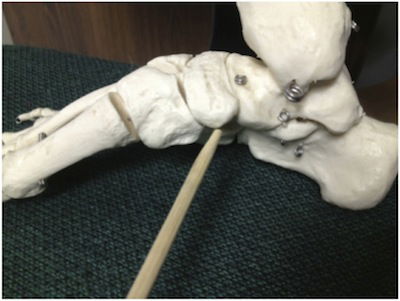
The talus (to the right of the pointer) is the keystone in the human arch. It transfers the weight supported by the arch to the front of the foot via the navicular bone (indicated here) and to the back of the foot via the heel bone (calcaneus, shown touching the floor on the right). One of the reasons some paleontologists think that Australopithecus afarensis was flatfooted is that the afarensis’ navicular bone—in contrast to the human’s—looks like it was designed to bear weight directly on the ground as part of a flat ape foot. Image: E. Mitchell, MD
Despite a title suggesting they had discovered a fossilized foot with an arch—“Complete Fourth Metatarsal and Arches in the Foot of Australopithecus afarensis,”—Ward and her colleagues examined a lone fourth metatarsal bone found among the miscellany of bones in the Hadar Formation, the region in which the original Lucy was found. They say the 370 or so bones found there have all been afarensis bones, and they write that for that reason “We assign AL 333-160 to A. afarensis.”14 But can we really trust what they claim? How do we really know that all the miscellaneous fossils in this strata are afarensis bones? After all, if an intact human skeleton were to be found fossilized in this rock, evolutionists would classify it as anything but human because they have already decided that a human could not have existed at the time they contend the rock was laid down. Furthermore, given the many false claims over the past 100 years about the discovery of “missing links” in human evolution, we have every reason to be highly suspicious that the fossil evidence is being misinterpreted. See Ape-men: the Grand Illusion.
Dem Bones
Australopithecus afarensis is extinct. Its bones suggest it was not identical to living apes, but it did have much in common with them. Many have assessed the skeletal pieces of the various afarensis and possible afarensis fossils that have been found. Overall, these skeletal parts reveal an animal well-adapted to arboreal life. Its wrist bones also suggest it was a knuckle-walker. Reconstructions of its pelvis demonstrate its so-called “bipedal” gait was nothing like a human being’s upright gait. In fact, it is only the evolutionary wish to impute a bipedal gait to this animal that marches its fossils upright across the pages of the evolutionary story.
The fourth metatarsal rescued from a pile of over 370 miscellaneous bones looks remarkably human, as presented in the comparative photos from Ward et al.’s 2011 article in Science. Side by side with gorilla and chimp metatarsals, its contours and angles appear quite human and different from ape. Carol Ward obviously agrees, for in an interview about the study she said, “Lucy’s foot would have been just like yours or mine.”15
The comparative photos (see illustrations) show why Ward would say the bone she examined looks human. But if it looks so human, could it possibly be from a human? Evolutionary anthropologists would say absolutely not, because the volcanic rock in the region is dated at 3.6 million years old, before (they contend) humans evolved. Yet those dates are based on a number of worldview-based, scientifically unverifiable assumptions used in the interpretation of radiometric data.
The case for building a brand new look for Lucy on the basis of a single isolated human-looking bone that evolutionary scientists chose to “assign.”
Stripped of such unverifiable assumptions, the case for building a brand new look for Lucy on the basis of a single isolated human-looking bone that evolutionary scientists chose to “assign”16 to Australopithecus afarensis seems quite a stretch. The goal, museum officials admit, is to give Lucy and her purported kin a leg up on the evolutionary tree toward a more human-like appearance. Such a picture is worth a thousand words to the many impressionable undiscerning eyes who will stroll through the museum and browse its internet images thinking they are seeing their long-dead ancestor. Artistically crafted ape-ladies like the new Lucy—or even the older models, which were deceptively human-looking enough—and ape-men such as artist John Gurch’s humanized renderings of
Lucy has popularized for the public and many professionals the idea that ape-like ancestors grew bigger, brighter, and progressively more human brains after they became accustomed to viewing the world from a bipedal pedestal. Yet nothing in biology has ever demonstrated transitions such as would be required to make this leap.
Those committed to a belief that molecules evolved into living things and ape-like ancestors into human beings cannot support their beliefs through testable scientific observations. Study of fossilized skeletons of extinct apes like those clearly seen to belong to afarensis may reveal clues about how these animals moved, but not about how they evolved. And introducing bones that are “assigned” to afarensis on flimsy grounds muddies the information that actually can be gained from such studies. But neither these analyses nor new fleshed out reconstructions scientifically demonstrate that ape-like creatures evolved into humans.
Why Does It Matter?
The false message preached by the new “Lucy” asserts that human beings are mere animals, the products of molecules-to-man evolution, rather than sinful created beings desperately in need of a Savior. And that is the danger and tragedy of such powerful pictures.
The true origin of humanity is recorded in the only eyewitness account of the event—that provided in the Bible by the Creator God, who supernaturally made man and woman in His own image, without evolution, about 6,000 years ago. On the same day He made all kinds of land animals including apes like afarensis. That same God sent His Son Jesus Christ into the world as a human being to sacrificially die and rise again (Acts 17:24–31) in order to redeem rebellious humanity to Himself. At Answers in Genesis, we tell the truth about fossils like “Lucy” because we are concerned about the deceptive power of visual images like the new Lucy to keep many from seeing themselves as human beings accountable to their Creator who both judges and loves them and desires that they be saved.
Further Reading
- A Look at Lucy’s Legacy
- Lucy, the Knuckle-Walking “Abomination”?
- Lucy’s Great Grandfather?
- Should Sediba Sashay to the Throne for Oldest Human Evolutionary Ancestor?
- “The Search for the Historical Adam” and Population Genomics
For More Information: Get Answers
Remember, if you see a news story that might merit some attention, let us know about it! (Note: if the story originates from the Associated Press, FOX News, MSNBC, the New York Times, or another major national media outlet, we will most likely have already heard about it.) And thanks to all of our readers who have submitted great news tips to us. If you didn’t catch all the latest News to Know, why not take a look to see what you’ve missed?
(Please note that links will take you directly to the source. Answers in Genesis is not responsible for content on the websites to which we refer. For more information, please see our Privacy Policy.)
Footnotes
- Ann Gibbons and Elizabeth Culotta, “ScienceShot: Lucy’s Svelte Look,” Science, September 23, 2013, http://www.sciencemag.org/news/2013/09/scienceshot-lucys-svelte-look.
- “On the Trail of Lucy: Public Symposium,” Cleveland Museum of Natural History, September 6, 2013, https://www.cmnh.org/announcements/lucy.
- Gibbons, A., “Lucy’s ‘Big Brother’ Reveals New Facets of Her Species,” Science 328, no. 5986 (June 25, 2010): 1619, doi:10.1126/science.328.5986.1619.
- Ibid.
- Ibid.
- Ibid.
- Peter Schmid, quoted in Richard E. Leakey and Roger Lewin, Origins Reconsidered: In Search of What Makes Us Human (New York: Doubleday, 1992), 193–194. See more in “Lunatics, Lucy, and a Little Nook for the School Library.”
- From chapter 2 of Lucy Maud Montgomery’s 1908 novel Anne of Green Gables: “Isn’t it splendid to think of all the things there are to find out about? It just makes me feel glad to be alive—it’s such an interesting world. It wouldn’t be half so interesting if we know all about everything, would it? There’d be no scope for imagination then, would there?”
- “Lucy’s Ancestor, ‘Big Man,’ Revealed,” Discovery News, November 27, 2012, http://www.seeker.com/lucys-ancestor-big-man-revealed-1766085806.html.
- Carol V. Ward, William H. Kimbell, and Donald C. Johanson, “Complete Fourth Metatarsal and Arches in the Foot of Australopithecus afarensis,” Science 331, no. 6018 (February 11, 2011): 750–753, doi:10.1126/science.1201463.
- Ibid.
- Ibid.
- Ibid.
- Ward et al., “Complete Fourth Metatarsal and Arches in the Foot of Australopithecus afarensis.”
- Brian Thomas, “‘Lucy’s’ New Foot Bone Is Actually Human,” Acts & Facts 40, no. 4 (2011): 17, www.icr.org/article/6018.
- Ward et al., “Complete Fourth Metatarsal and Arches in the Foot of Australopithecus afarensis.”
Recommended Resources

Answers in Genesis is an apologetics ministry, dedicated to helping Christians defend their faith and proclaim the good news of Jesus Christ.
- Customer Service 800.778.3390
- © 2025 Answers in Genesis

